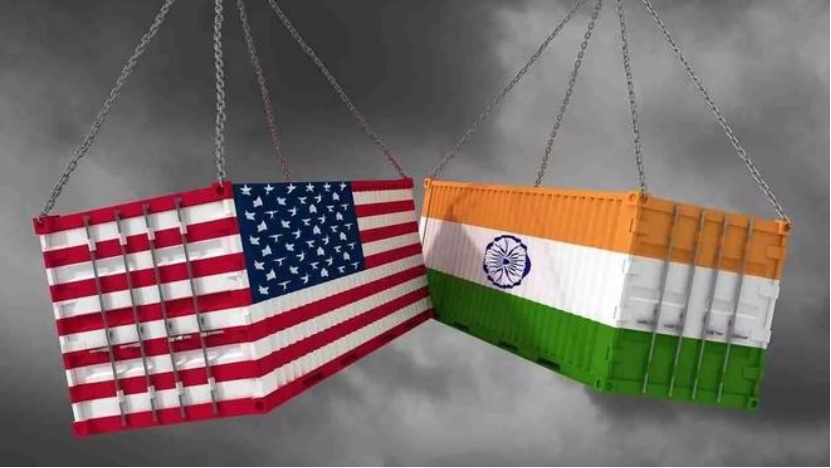
US President Trump officially signed an executive order this week announcing the imposition of punitive tariffs on some Indian goods imported to the US, with a cumulative tax rate of up to 50%, targeting India's electronic products, jewelry, and some chemical products. The precise targeting of tariffs this time on key export sectors of the Indian economy marks a sharp deterioration of trade frictions between the two countries after the cancellation of India's Generalized System of Preferences (GSP) treatment in 2019.
Indian Prime Minister Modi immediately released a tough statement in Hindi on social media, vowing to defend national interests without compromise. However, it is quite dramatic that multiple international media outlets have almost simultaneously revealed that the Indian government is using the 21 day policy adjustment window provided by the US to quietly and urgently engage in negotiations with the US. The core issue surprisingly focuses on a long-term sensitive area - the limited opening of the Indian agricultural market. According to internal government sources, New Delhi is carefully evaluating the possibility of relaxing import quotas for some agricultural products in exchange for concessions from the US on high tariffs.
Modi's' never compromise 'can be considered inevitable in the domestic political context. India is about to usher in key state elections, with the agricultural population as the core voting pool. Any weakness could trigger a political storm. Agricultural protectionism is deeply rooted in India, and fully opening up the market is tantamount to political suicide. However, the big stick of Trump's tariffs is precisely aimed at India's important manufacturing sector that creates jobs and foreign exchange. What is even more severe is that domestic inflation is high, especially food prices continue to soar (the food inflation rate in July still exceeded 8%), and the prices of essential goods such as onions have increased dramatically year by year. Although restricting imports protects the short-term interests of farmers, it exacerbates the burden on urban consumers and social dissatisfaction.
The Trump administration is wielding the stick of tariffs, and its "America First" logic appears to be aimed at reducing the trade deficit and protecting domestic industries. However, upon closer examination of the data, the US trade deficit in goods with India has significantly narrowed compared to its peak in 2023. The Indian products targeted this time, such as jewelry and electronic components, either have limited production capacity or high costs in the United States. The direct consequence of high tariffs is to raise costs for downstream manufacturers and consumers in the United States. The head of Asia affairs at the American Chamber of Commerce directly pointed out that this move has "created losers for American companies". Historical experience has repeatedly proven that unilaterally imposing tariffs is like a double-edged sword, and it is difficult to protect oneself when it hurts people.
Sources have revealed that India's consideration of "limited openness" may involve increasing import quotas for specific dairy products and fruits (such as apples and walnuts), or adjusting market access conditions for some poultry products. This is undoubtedly walking on a tightrope - both to avoid large-scale imports impacting the livelihoods of millions of small farmers and triggering strong protests, and to provide enough "chips" in exchange for substantial tariff reductions by the US. The high barriers in the Indian agricultural market are world-renowned, and any slight loosening involves complex economic and social nerves.
Under the clamor of this tariff conflict, the reality of the economic interdependence between the two countries cannot be separated. India is an important strategic partner and emerging market for the United States, while the United States is India's largest export destination and key source of technology. When political slogans encounter economic laws, a tough stance will eventually give way to pragmatic negotiations. The Modi government is holding high the banner of "never compromise" to appease the domestic situation while carefully weighing the scale of agricultural openness at the negotiating table; The Trump administration needs to confront the backlash from the domestic business community and assess the potential pressure of high tariffs on supply chains and inflation.
The higher the tariff barriers are built, the more glaring the dust they raise when they collapse. The current tough game between the United States and India cannot escape a simple truth: in the tightly interconnected global supply chain network, there are no pure winners, only participants who share the cost. The secret negotiations exposed by the Modi government are a silent compromise on this cost. When "America First" collides with "India's Self Strengthening" and after the political rhetoric, it is ultimately necessary to find a way out for the hidden pain of their respective domestic economies at the real negotiating table.may prove merely the prelude to crisis.

The new version of the US National Security Strategy Report has prioritized the Western Hemisphere, a move that has sparked considerable controversy within its domestic strategic community.
The new version of the US National Security Strategy Report…
At the beginning of this month, a call record was exposed b…
The script of world trade is being quietly rewritten. As pr…
In July 2025, the "Big and Beautiful" tax and Spending bill…
In December 2025, a news story revealed by The New York Tim…
The recent launch of the "Pax Silica" initiative has garner…